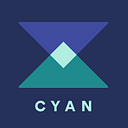Doing Nothing is An Active Bet Against Change
Protecting a portfolio from obsolescence risk
By Beth Richtman, Managing Partner, Cyan Capital Partners

It can be hard for investors to know what to do about the megatrends driving the global economy to be a more sustainable and inclusive one. Yet the world is changing. Renewable energy has become the cheapest form of power in the world. Sustainable foods, electric vehicles, a distaste for waste, desire for resilience in a changing climate and push for inclusivity are mainstream consumer preferences that now drive spending.
At many institutions, the opportunities these changes present remain out of reach and underexplored. Institutions may miss significant opportunities with a “wait and see” approach. Nevertheless, these institutions should have no doubt that these same megatrends present risks in their portfolios if unaddressed.
All too often, portfolios hug traditional benchmarks and focus on incumbent investment managers, many of which are rooted in legacy approaches to investing capital and managing assets. Fresh thinking and innovative approaches are concentrated in newer investment managers, which many institutions overtly avoid due to policy or resource constraints. “Wait and see” can become a comfortable default.
“Innovate or Die” [1]
During my years as an investor at CalPERS, I had the opportunity to lead a team in designing an energy optimization[2] program for our ~$40Bn real estate portfolio. In many ways, it was an ideal ESG Integration project that was clearly at the intersection of profitability and positive impact.
We believed that by pushing our external managers to systematically seek and deliver profitable opportunities to optimize the energy use of our assets, we could lower the carbon footprint of the assets while improving net operating income, attractiveness to tenants and, relatedly, our assets’ value. Furthermore, this work was a way to protect the portfolio from the risk of obsolescence. In other words, we sought to position our portfolio to perform well by adapting and evolving it for relevance in, and resilience to, a changing world.
The approach did not involve radical shifts. There was no sudden allocation change or billions of capex to be spent.
The program did, however, create a systematic approach that enabled CalPERS to unearth opportunities and manage risks that were emerging in our portfolio. Tenant demand for sustainable buildings was increasing, a changing climate was expected to increasingly impact HVAC and other operating costs and technology and policy shifts were clearly accelerating. All of which were likely to change the value of some buildings versus others, depending on their answers to these changes.
Our program offered a disciplined and profitable path. Importantly, it also helped open CalPERS’ internal and external managers’ eyes to the technological advances that had occurred in lighting, HVAC, solar, etc. that now enabled economically attractive efficiency retrofits. CalPERS could pluck this low-hanging fruit, which meant wins for both the environment and our bottom line.
In just the program’s initial few years, opportunities were identified that could deliver millions of dollars a year in savings.[3] At a time of low cap rates, the ROI for these projects was quite attractive. The program at CalPERS is still underway and focused only on economically attractive actions. I expect that the financial impact will be accretive in the short-term, but also will mitigate the larger long-term financial risk of holding stagnant assets, out of step with our changing world.
Adapt and Evolve
Even small changes like those described above can be hard to make in the moment, but now seem obvious with the clarity of hindsight. Inertia is a strong force, but it is important to remember we must always adapt and evolve.
Institutional investors need to be open to new practices and new strategies, both by engaging with existing investment managers on their practices and by deploying capital into new teams with new strategies designed to benefit from the vast and emerging sustainable investment opportunities.
Investment professionals often think of “doing something” as an active bet and a “wait and see” approach as prudence and less risky to their portfolio. It turns out that doing nothing is also an active bet. Further, doing nothing in the face of a world transitioning to a sustainable and inclusive economy is an active bet against that change.
We put up an umbrella when it rains, we take off a sweater when it gets hot — we adapt to our changing circumstances. Doing nothing in the face of a changing world makes little sense. Doing nothing may be convenient in the short-term, but is not a solution in the medium- and long-term.
Our portfolios can either be vulnerable to obsolescence or be positioned to thrive. In the CalPERS energy optimization example, we created a path to avoiding risk in our real estate portfolio and created opportunity for new investment returns.
Take the Opportunity to “Do Something”
As fiduciaries, we are all obligated to have our eyes trained on the horizon and to deploy resources in an informed, thoughtful way. It turns out that incorporating innovation into investment decision-making is a key element of prudence and judgement.
The transition to a more sustainable and inclusive economy is under way. Informed and disciplined approaches to capturing the related opportunities, and mitigating the risks, are possible. Given the scale of the transition, doing nothing is probably not the active bet that aligns with fiduciary duty.
Download a PDF here
[1] “Innovate or die” made famous by Peter Drucker
[2] https://www.calpers.ca.gov/docs/energy-optimization-initiative.pdf. As stated in the program’s document, the intent was “to have a systematic approach in place that enables managers to be proactive in finding opportunities to improve the quality of our assets through energy optimization and mitigating the obsolescence risk of energy sources, systems, equipment, materials, and controls.”
[3] https://www.calpers.ca.gov/docs/board-agendas/201902/invest/item07a-04_a.pdf & https://www.pionline.com/article/20180903/PRINT/180909991/calpers-zeros-in-on-climate-human-capital-issues
CalPERS is not affiliated with Cyan and the mention of CalPERS is for informational purposes only. In addition, any mention of CalPERS does not constitute as an endorsement.
